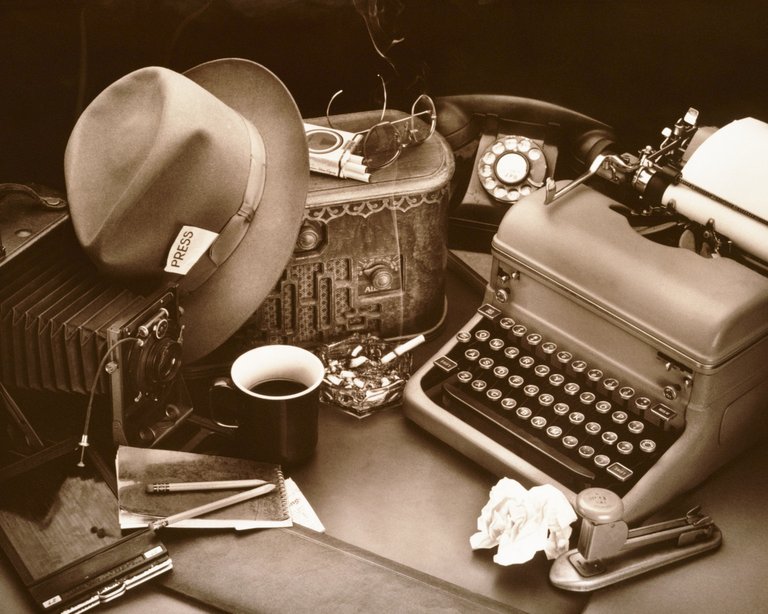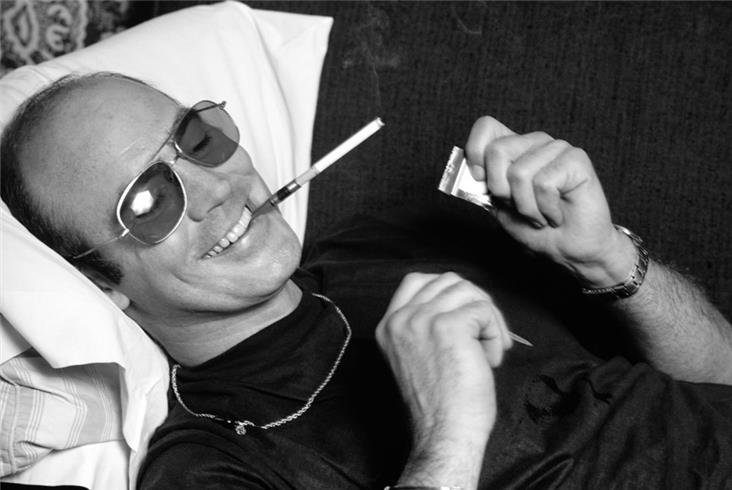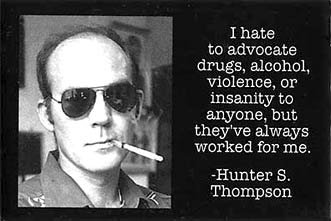New & Gonzo Journalism

New Journalism
New Journalism developed in the 1960’s and 1970’s. The idea of this American literary movement was to push the boundaries of traditional factual journalism and nonfictional writing. Famous writers who are credited with beginning this movement include Tom Wolfe, Truman Capote, and Gay Talese.
The New Journalist way
Journalists who adopt the New Journalism style used traditional ways of gathering information, but their final product was very much different to that of traditional journalism. As in traditional investigative reporting, writers focused a lot on their subjects, spending months in the field gathering all the facts through research, interviews, and observation. Unlike traditional journalism though, New Journalism has a story structure with well-developed characters, sustained dialogue, vivid scenes, and strong plotlines marked with dramatic tension. Furthermore, New Journalists also wrote in voices that were distinctly their own. It is evident that all of this is very different to that of traditional factual journalism and this was the purpose of New Journalism. New journalists shifted away from factual writing by adding creativity, subjectivity and fictional writing to their stories.

Gonzo Journalism stemming from New Journalism
Another form of journalistic writing that also goes against tradition journalism is that of Gonzo writing. All credit for the creation of the genre of Gonzo journalism can be attributed to Hunter Stockton Thompson. Gonzo journalism can be described as a highly personal style of reporting. Because of Hunter S. Thompsons unique personal subjectivity in his reporting’s, he was labelled as a countercultural icon in the 1970’s. This was because he went against the traditional norm of journalism. Thompson first introduced his subjective style of reporting in 1970 with an article titled “The Kentucky Derby Is Decadent and Depraved".

Thompsons creative substance
Thompsons inspiration to pursue journalistic writing, which ultimately led to the creation of Gonzo writing, stems from his outlaw figure, passion for the principles of individuality and freedom, and discontentment with the nature of both the American press and American life. All of these characteristics are evident in the theme of Gonzo Journalism. Thompson did not do all of this alone though. He was a countercultural icon who took varies illegal substances whilst reporting on events. He felt that this helped his creativity and added substance to his stories.

Why New & Gonzo Journalism started?
In the years of the 1960’s, journalism was boring and society was changing. This was the era of breaking away from societies norms and breaking the rules. The profession of journalism wasn’t the only countercultural movement, countercultural movements such as the Beat poetry also emerged in this time. As relating to journalism, this was a time when people were starting to see that subjectivity and not objectivity was where the truth was. Because of this longing for subjectivity in journalism a new form of journalism was formed. This new form of journalism was labelled “New Journalism”. Gonzo Journalism, practically the individual Hunter S. Thompson followed this countercultural act of journalism. This is why Gonzo Journalism can be seen to have stemmed from New Journalism and can be regarded as a sub-genre of New Journalism. Both New Journalism and Gonzo Journalism possess similar characteristics such as subjectivity and fiction. Gonzo Journalism can be seen as a more extreme version of New Journalism because of Thompsons tendency to completely break the rules of Journalism. Whether in Thompsons observations of real-life events while on illegal substances or his unique subjective writing style, he followed the countercultural act of New Journalism and developed his own extreme form of New Journalism.

legend